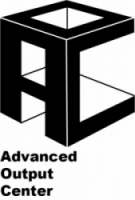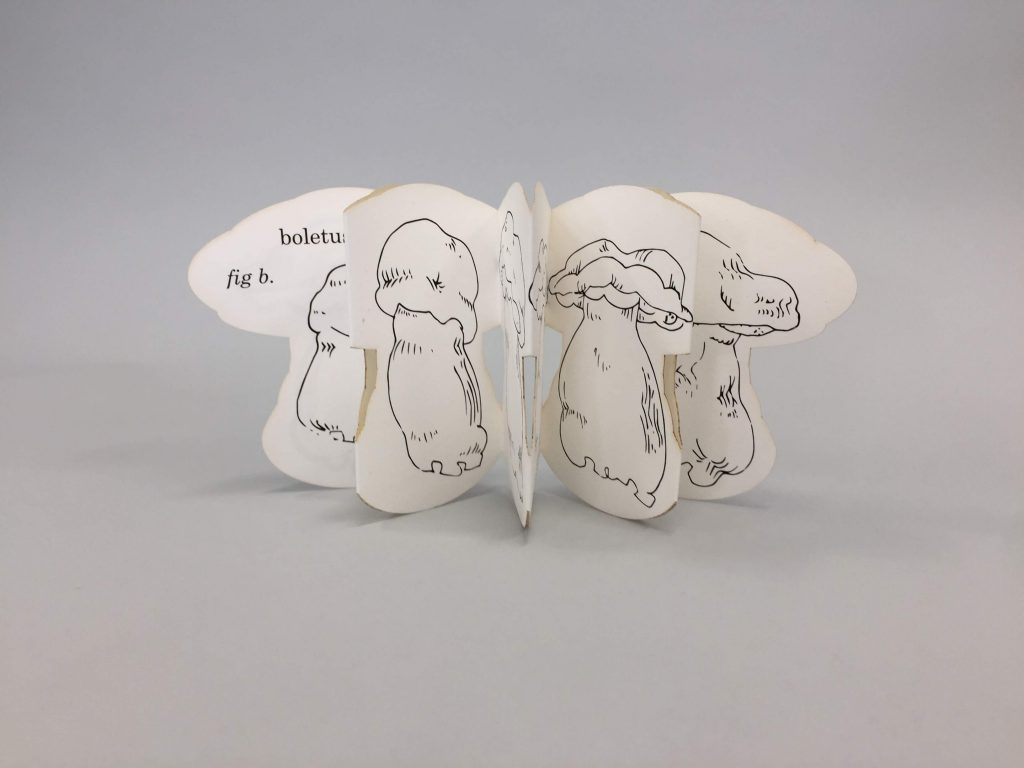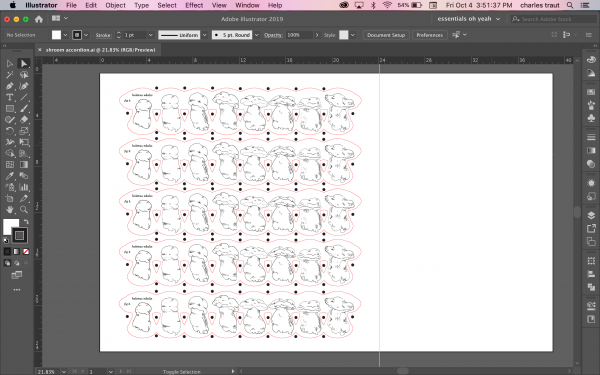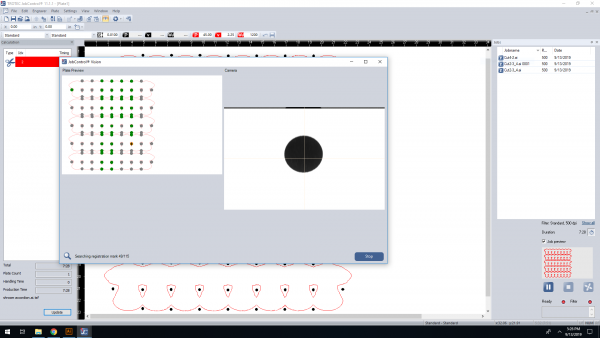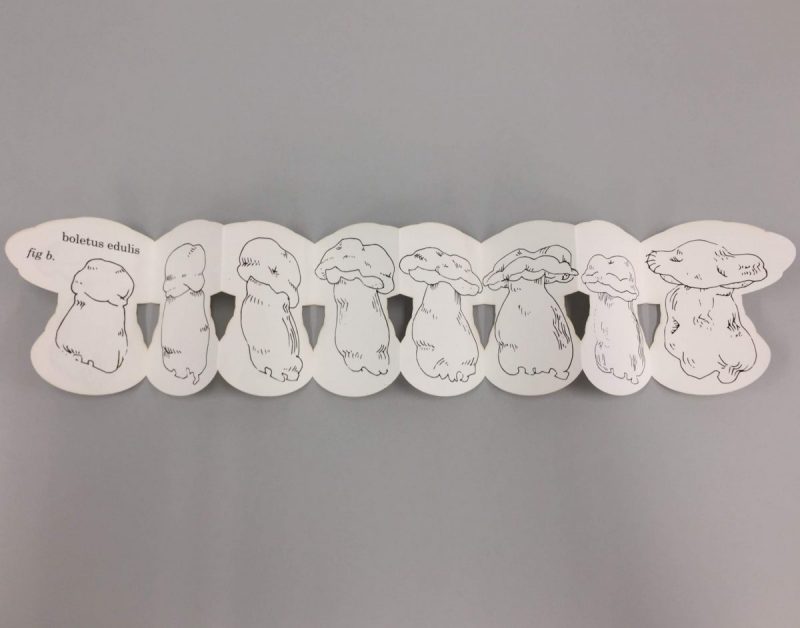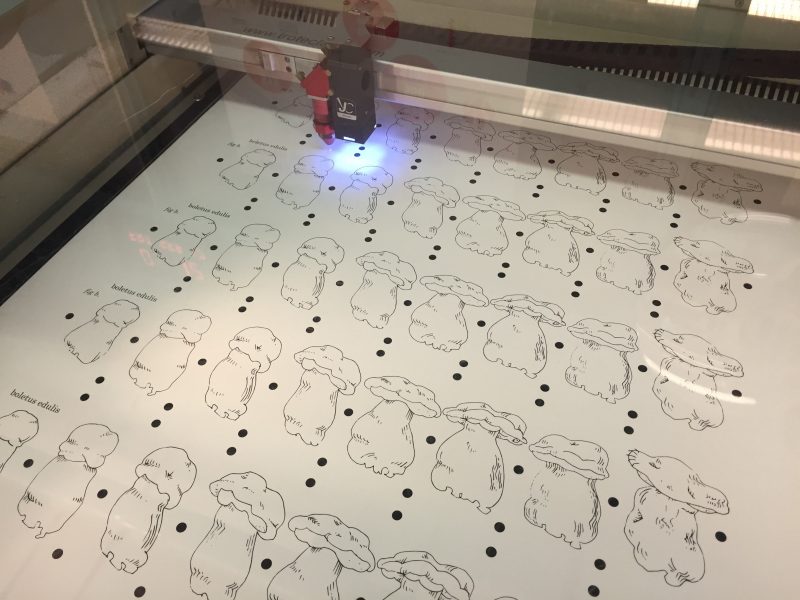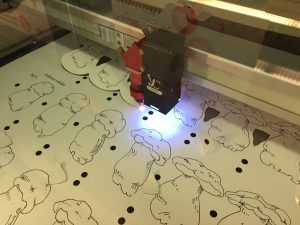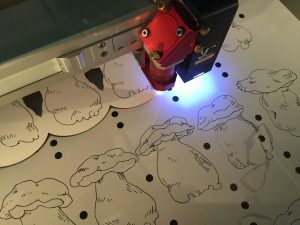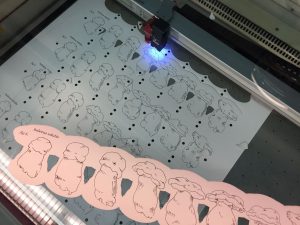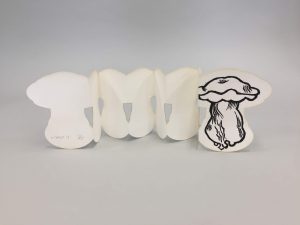Written by: Charles Traut
Our Trotec attachments, the Vision and Rotary Tool, are perhaps some of the most unused resources here at the AOC. Most people don’t know we even have them. So I’ve always looked for projects I could utilize them in – sophomore year I engraved a bunch of glass spell jars for an installation, and now that I’m enrolled in a bookmaking course, I’m finding more opportunities to involve the Vision in my work at SAIC.
This book started with a mock-up I had created from a simple one-sheet folded accordion – it was there I made the drawings and decided on layout, which eventually morphed into the single-sided 8 page accordion you see here. After scanning those drawings at the AOC, I moved them into Illustrator, vectorized them, and decided on what the silhouette and dimensions of the final book would be. This file acted as my sort of ‘master template’ – it’s the matrix that I would print out and eventually give to the Vision to cut.
The book was printed out on Columbus’ 24 Inch Watercolor printer at 24×24”. Each sheet fit 5 books with accompanying registration points. I found that modifying our 1/16th” Matboard/Chipboard setting worked wonderfully for this project – it resulted in clean cuts with minimal burn.
Since this was a complex cut, and I didn’t have room (or money) to spare for an edition of 15, I strategically placed 1/4th” registration dots at each curve and interior where I thought the Vision may need it. The lateral dots were to keep the cut straight along the paper, while the interiors made sure that each inner cut was placed exactly. Unfortunately, this meant the Trotec took a while to find and register each dot.
However, the accuracy and speed of the laser cutter more than made up for it. I installed the vacuum bed for this project, and ensured the material was as flat as possible. Then I popped the camera onto the head, and started everything up.
Monitoring the cut as it ran was extra important here – even though the vacuum bed was installed and the ventilation half-closed, I needed to ensure nothing was going to fly around and potentially impede the laser. This meant closely watching each cut, checking for burning, and occasionally pausing to re-secure the paper with tape as it got closer and closer to the final book on each sheet. Since the material had a natural bend to it (as commercial paper often does – grain matters!) I had to make sure the focus didn’t change as it cut.
After the job had ran and I collected my cut pieces, all that was left was to print on the front (the woodblock was carved from MDF that I had laser cut to fit), and fold accordingly.
If you’re interested in using the Vision for a project at the AOC, come in and talk to us, and take a look at our Vision set-up guide here: http://sites.saic.edu/aoc/wp-content/uploads/sites/68/2019/01/Trotec-Vision.pdf
Charles Traut
AOC Lab Specialist
instagram @thesorou
